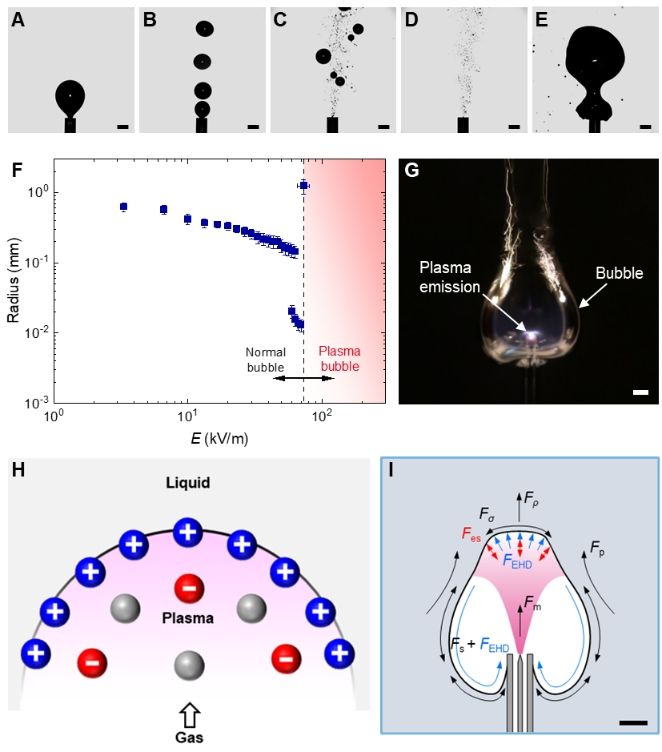The team of Prof. Wang Junfeng from the School of Energy and Power Engineering of Jiangsu University (JSU) and the team of Prof. Dong Mingdong from the Center for Interdisciplinary Nanoscience at Aarhus University in Denmark published the latest research results entitled Occurrence of giant plasma bubble in liquid in the international top journal Matter of Cell Publishing House, which was recommended as the cover paper of the journal. Prof. Wang Junfeng is the first author and corresponding author, Prof. Dong Mingdong is the co-corresponding author, and Wei Zhang, postdoctoral fellow, is the co-first author.

When a fluid is subjected to an electric field, its flow phenomena exhibit unique characteristics compared to traditional fluids due to the coupling interactions between charged particles and the fluid interface. This study reports for the first time the cross-scale transformation process of bubbles in a charged liquid-gas multiphase flow system under a strong electric field, from microscopic to macroscopic scales. This phenomenon arises from the interactions between charged particles and neutral particles. The resulting plasma bubbles and the interface phenomena between the ionized gas and the liquid have significant impacts on the fluid dynamics characteristics and interface stability. This breakthrough surpasses the traditional multiphase flow systems that focus on gas-liquid-solid mixtures, involving rich frontier scientific issues and theoretical innovations in multiphase flow.

The regulation of droplet and bubble dispersion and transport characteristics through an electric field to enhance multiphase flow heat and mass transfer and reaction processes is a significant application of charged multiphase flow theory in the field of efficient energy conversion and utilization. This study innovatively constructed a liquid-gas (plasma) system and conducted visual measurement research, successfully observing a new physical phenomenon where low-temperature plasma forms stable large bubbles in the liquid phase. It is the first to report the dynamic characteristics of low-temperature plasma bubbles in the liquid phase. This research advances the understanding of traditional solid-liquid-gas multiphase flow systems, establishing a new multiphase flow model with plasma-liquid(the fourth state of matter) as the research subject, and holds significant application value in efficient energy conversion.

